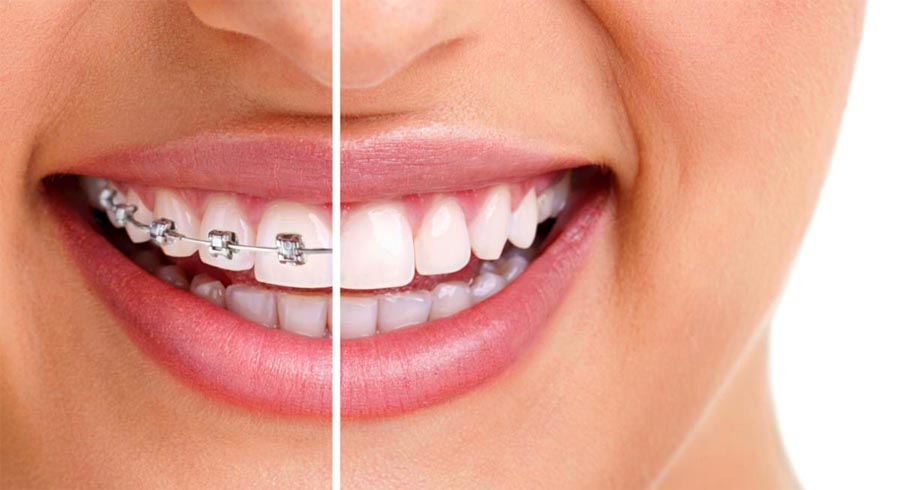Tooth Braces
Braces are a tool used by orthodontists to help them realign a patient's teeth or bite. The term for most abnormalities in the teeth is called a malocclusion.
Things like under bites, overbites, cross bites, open bites and just crooked teeth fit into this category. Generally braces are used as a part of a tooth restructuring process for reasons of health, but sometimes braces are used for cosmetic reasons. Braces have four basic parts; Brackets, Bonding Material, Arch Wires and a Ligature Elastic;
Brackets:These are commonly made out of some kind of metal or ceramic material. A single bracket is attached to the front side of each tooth in the mouth.
Bonding Material: This is almost always a glue product but is sometimes a metal band. Whether glue or metal, these help keep the bracket attached to the front of the tooth.
Arch Wire:Arch wires are thin metal wires attached to each bracket and which run across to the adjacent bracket. These also help to keep the teeth in place by putting pressure on the teeth themselves.
Ligature Elastic: Ligature elastics (also called "o-rings") are small coloured elastics that connect the arch wires to the brackets on the teeth. The elastics are changed and adjusted on each visit to the orthodontist to keep pressure on the teeth. However there are some kinds of braces that do not need elastic ligatures, these are called "self ligating braces".
Braces have come a long ways from their early ancestors. Originally braces were stainless steel, no exceptions, but with modern orthodontics there are a variety of options when it comes to adjusting your teeth, depending on your needs and specific situation.
Traditional Braces: As mentioned above, these were stainless steel; however the "traditional" braces today are mostly nickel titanium. These braces can be both conventional (elastics holding the arch wire in place) or the newer self-ligating braces. The new type can reduce the overall friction that occurs in the mouth between all the pieces of the braces and can be a huge benefit for some people.
Clear Braces: Although not actually clear, they are a cosmetic spin on the tradition style of braces. By using natural teeth colours and/or methods that make them less conspicuous to outside viewers, they can usually be quite hidden from sight. Clear elastics and white metal wire is also used to cut back on the visibility.
Gold-Plated:These types of braces are usually used for people who have stainless steel braces but are allergic to nickel (a key component of stainless steel). These can also be a cosmetic approach as some people would rather have a gold appearance to their braces than shiny silver.
Lingual:These types of braces are placed behind the actual teeth and are completely invisible to the regular person. They are generally more expensive as they can be a lot harder to adjust. They can also be a problem to the movement of the tongue, and this is another consideration in their usage.

